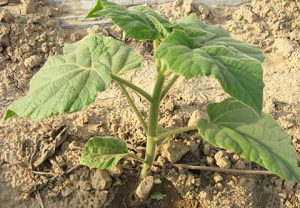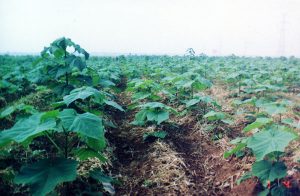Soil sample collection knowledge
The collection of soil samples (soil samples) is an important link in determining whether the results of soil and fertilizer determination correctly reflect the characteristics of the soil. Therefore, the correct collection method must be used to collect samples on representative areas for soil and fertilizer determination.
Sampling unit
Before sampling, it is necessary to understand the soil type, fertility grade, topography and other factors of the sampling area, and divide the soil testing area into several sampling units. On average, each sampling unit is 100 acres (one for plain areas and field crops for every 100 to 500 acres). For mixed samples, take one mixed sample for every 30-80 mu of horticultural crops in hilly areas and fields), and the soil in each sampling unit should be as uniform as possible.
sampling time
Plain areas are generally collected after crops are harvested or before planting and fertilization; for shallow hilly areas that have not been cultivated, there is generally no strict time limit for soil sampling; when nitrogen fertilizer topdressing is recommended, it should be before topdressing or during the critical period of crop growth.
Sampling depth
The sampling depth is generally 0 ~ 40cm
Distribution and route of sampling points

Sampling should be carried out along a certain route according to the principles of “random”, “equal amount” and “multi-point mixing”. S-shaped sampling points are generally used to better overcome the errors caused by farming and fertilization. In the case of small topographic changes, relatively uniform ground strength, and small sampling unit area, plum blossom-shaped spot sampling can also be used.
If the area is less than 10 acres, take 5-10 points; for 10-40 acres, take 10-15 points; if the area is greater than 40 acres, take 15 points or more. The distribution of sampling points should be arranged in different forms according to the shape of the plot: if the plot is square, the points are arranged diagonally (1); if the plot is rectangular, the points are arranged in a serpentine shape (2).
Sampling method
The soil sampling depth and sampling volume at each sampling point should be uniform, and the ratio of the upper layer and the lower layer of the soil sample should be the same. The sampler should be inserted into the soil perpendicular to the ground at the same depth. Shovel a section of the cultivated layer first when sampling with a soil shovel, and then shovel the soil parallel to the section.
Sample size
Remove the floating soil, use a shovel to insert vertically to dig out about 1 kilogram of soil and put it in a large cloth bag or a clean woven bag, then pour it on a plastic cloth and mix it thoroughly, then pick out the rocks, cinders, residual roots and leaves, etc. Impurities. Use the quartering method to repeatedly eliminate until about 0.5 kilograms of mixed soil samples remain. Put the prepared mixed soil sample into a paper bag and bring it back to the room, twist it, and dry it naturally before sending the sample for measurement.
Schematic diagram of the quartering method: the soil samples taken should be fully mixed, spread out on paper, and the diagonal soil should be eliminated with a cross line, and then the soil sample should be fully mixed, and then the diagonal soil should be eliminated with a cross line, and so on. The remaining soil sample is 0.5kg.
Sample mark
Each soil sample should have a label indicating the person who collected it, the sampling location, the date, the depth, the previous crop and the current crop, etc.
Send samples
Put the sample into the bag, write it with a pencil, and tie the bag tightly to send the sample.
Precautions
In the collection of soil samples, in addition to paying attention to the correct collection method, it is also important not to take samples from fields, roadsides, ditch sides, fertilizer piles and fertilization places of previous crops. All tools used in sampling can be obtained as cleanly as possible. More accurate test results.







Howdy would you mind stating which blog platform you’re working with?
I’m planning to start my own blog in the near future
but I’m having a tough time choosing between BlogEngine/Wordpress/B2evolution and Drupal.
The reason I ask is because your design seems different then most blogs and I’m looking for something completely unique.
P.S Sorry for being off-topic but I had to ask!
Wonderful beat ! I wish to apprentice while you amend your site, how could i subscribe for a blog web site?
The account aided me a acceptable deal. I had been a little
bit acquainted of this your broadcast provided bright clear concept